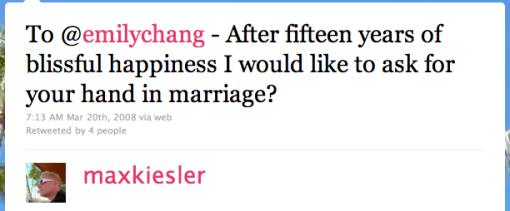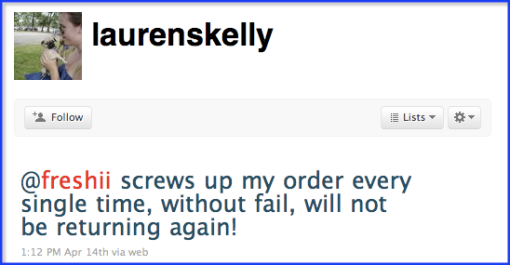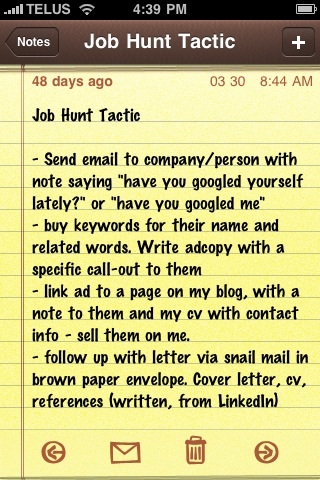Why People Are Voting For Trump
A marketer’s perspective on how Donald Trump won the GOP nomination, captured the hearts and minds of a surprisingly large number of the American public, and continues to have their support despite his numerous and very obvious shortcomings
I must admit that I was scared to publish this post. I am not that well informed on politics, let alone that of the US. And this is a lightning rod of a topic.
However, I know a thing or two about marketing. I am able to remove myself from a situation and examine it from multiple perspectives. And I enjoy studying culture, thinking about the current and future state of the world, and discussing such matters with other open-minded individuals.
Political campaigns are also 100% marketing.
They are about establishing clear and measurable objectives; surveying and understanding the external and internal environment; selecting an audience (or audiences – ideally with a common psychographic trait or belief system); deeply understanding that audience; shaping the identity of a product, service or in this case, candidate, to meet the values of that audience; and creating a system that leverages the internal and external forces, audience understanding, and the candidate’s desired identity, to craft and reinforce a narrative which resonates with the audience, compelling them to take a specific action (i.e. vote).
So I decided to take the risk and hit the “publish” button.
But before I begin my discussion on why Trump has been able to achieve what he has, allow me to make one thing abundantly clear.
I do not support Trump.
I do not think he has the skills, temperament, nor experience to lead a country. Nor do I think he is a respectable human being. Such topics have already been detailed by too many articles and publications to count, like this, this and this. Just know that my writing of this post/article does not in any way imply that support him or condone his actions.
If I were able to vote, I would vote for Hillary Clinton. She is remarkably qualified and has the experience and tact to lead the US during these challenging times. Yes, she has made mistakes – big ones – and in my opinion has run a poor campaign, which I will discuss at points below. But of the two potential options, there isn’t even a contest. It’s a sad state of affairs, but I digress.
So how is it that a man who has repeatedly been denounced by the press, celebrities, and his own political party have, at the time of publishing this post/article, 43% of the popular vote?
And despite his remarks objectifying women, and his ridiculous behavior in the 2nd debate, he still has a mass of loyal supporters – including women willing to defend and support him.
Let’s begin with a quick discussion of human behavior. Voters are human (yes, I know this may be obvious). And there are a number of things about humans and our behavior, particularly as it relates to elections, that need to be considered.
We are not rational, logical beings
Despite what economic theory would like us to believe, we are not perfectly rational beings. In fact, we are irrational and emotions play a huge role in our decision making. Voting is about making a decision; thus emotions are involved as are a variety of other factors.
We do not have time (nor care) to assess all available information
Despite all the things that have been written about Trump, few people have read it all or care to. The same goes for what has been written about Hillary. We simply don’t have time. We scan and choose to consume information that aligns with our perspective. If you’re a Hillary supporter, consider this: how many negative articles about Hillary have you read? My bet: less than 5, and that’s being generous. Now consider that there are people who think differently than you, and for whatever reason, support Trump. They do the same thing.
We are prone to single-issue voting
Ok, this is a big one. Elections are very complicated and when assessing which candidate to vote for, there are an enormous number of issues to consider. But humans prefer simplicity, so we look for ways to make things easier and decide using heuristics. We also have different values and priorities – to one person it might be their job security, another taxes, another child-care benefits or education, or their personal safety and security, or immigration, or support for veterans and the military. The list goes on. The reality is that we commonly will latch onto one issue, above all others, to make our decision.
For example, consider the following, purposefully simple exercise, of evaluating a brief description of an individual and guessing who their preferred Presidential candidate would be:
- A low-to-middle-class blue collar worker whose company has undergone repeated restructuring due to cheaper labour in China or Mexico, and has lost, or fears losing, their job
- An individual who believes the government is corrupt, and hasn’t created significant forward progress for the economy
- An individual who is scared, not only for their own personal safety and security, but that of their friends, family and the country, due to increased terror threats and a perceived lack of response
- A racist, of which unfortunately there are many in the US
If you guessed that all these individuals would vote for Trump, congratulations, you’re a winner.
Oh and let’s also consider the political climate, and acknowledge the massive mistrust of government and people in power, who desire change from an outsider. Someone who is not a politician.
So while there are a number of things Trump has done wrong, there is also a lot he has done right from a marketing perspective. And remember, whether what he says is true, rational, etc. is unfortunately irrelevant. Donald Trump and what he says resonates with some people, and here’s why:
#1 – He has selected an audience with a shared mindset
Selecting and understanding your audience is one of the most fundamental tenets of marketing. You need to be focused; uncover the audience’s needs, wants, hopes and fears; and identity a shared mindset in order to truly connect. While an audience may be demographically diverse, especially in the context of a political campaign, this shared mindset is a common belief or view of the world that unites the group and is used to frame the conversation.
Trump supporters are diverse – but they have at least one thing in common: they don’t like what America has become or will become if it continues on the current path. Perhaps they long for the days when America was clearly the dominant world power and could use intimidation and force to achieve its agenda, or they just really dislike the Democrats. Regardless, they want change.
#2 – He has a careful crafted narrative
Humans love stories. And to connect with your audience, you need to craft a story that incorporates and validates the common belief, and presents a solution that resolves the underlying tension.
Trump’s approach has been to stoke fear within the American public, and establish a narrative that the country is in a terrible position due to the current administration (i.e. Barack Obama and Hillary Clinton) making poor decisions because they lack proper judgement, are influenced and corrupted by Wall St., have accomplished nothing beneficial in their time in power, and are too focused on being politically correct to do what needs to be done. He has positioned himself as a cowboy, unafraid of consequences, with no ties to the established way or process within government, who has run many successful businesses, speaks the ‘truth’ – politically correct or not – and thus is capable of putting the country back on track.
#3 – He has articulated a clear vision and perspective on the world
Brands (and leaders) that are successful and enduring, have a clear stance on the world. They outline a vision for what they seek to achieve, and in doing so provide the audience with direction and confidence; as well as frame of reference to evaluate actions.
While you or I may not agree with the slogan “Make America Great Again”, it is clear, fits nicely with the narrative Trump has established, and is action oriented. It also speaks directly to his audience’s shared mindset.
Unfortunately, I can’t say the same about Hillary. Do you know what Hillary stands for or is looking to achieve?
Until recently, I had no idea. Yes, I knew about her policies, but there isn’t a clear unifying theme. Her slogan, “Stronger Together” exemplifies this shortcoming. Sure it is a polite, unifying statement, but it’s bland and doesn’t symbolize change. Which for a large number of voters, in this or any election for that matter, is what they want.
#4 – He elicits an emotional response
As previously established, emotions drive to our decision making, often overpowering logical thought. This is one of the key reasons marketers seek to establish an emotional connection with their audience. When people feel something – whether positive or negative – it means they care and can be influenced; the worst thing for a marketer is for people to be indifferent.
Well, Trump makes it impossible to be indifferent. He is unfiltered, inflammatory, and absolutely outrageous. It fits his narrative and it’s why his supporters love him; he seems like a real human (more on that later). It’s also why his detractors hate him and continually talk about it, which he uses to his advantage (more on that later as well).
Hillary Clinton, on the other hand, is measured, polite, non-confrontational … and absolutely boring. (Way more competent than Trump in my opinion, but again that’s not the point) She’s even jokingly admitted she’s a robot; not sure that will endear her to many people.
#5 – He’s always in the news and being talked about
There’s an old adage that any press is good press. The idea being that the more frequently an audience is exposed to your brand and/or message – regardless of sentiment – the more likely they are to remember it. The underlying assumption being that awareness and familiarity are key to success.
While not always true (being repeatedly slammed in the media can caused significant damage), it’s a philosophy that works well in the political context. Remember my comments earlier about human behavior and elections?
But why trust me – there’s actual data and analysis from people way smarter than me to support this.
A Harvard study analyzing the media coverage for candidates leading up the 2016 primaries, found that “media exposure is arguably the most important” indicator of success. And Trump had coverage in spades. Of the 8 media outlets studied (including the Washington Post, New York Times and Wall Street Journal), Trump’s coverage was “more than one-and-a-half times the ad-equivalent value of Bush, Rubio, and Cruz’s coverage”. Not only that but “Trump’s coverage was favorable”.
The report also concluded that “Trump exploited [journalists] lust for riveting stories” and described him as “the first bona fide media-created presidential nominee.”
Now consider that since the Presidential race began, Trump has received almost 2x more coverage than Hillary.
#6 – He’s turned Hillary’s strengths into her weaknesses
There are numerous ways a brand can defend against competition, from having a unique position, to continual innovation, or building a Blue Ocean Strategy. Another is what I like to call “marketing judo”, which involves using a competitor’s strengths against them. It can also be used to turns one’s own weakness into a strength. Trump has executed marketing judo on Hillary, and it fits perfectly with his narrative.
At the DNC, Obama praised Hillary, stating that she’s the most experienced and qualified person to ever run for President. Her experience as a first lady, Senator and Secretary of State is definitely advantageous and a reason many people support her.
However, Trump has used Hillary’s experience to discredit her: equating her with the establishment and repeatedly hammering her in the debates for her failures while in these positions (i.e. Benghazi, Email Scandal). And while it may annoy or frustrate Hillary devotees, it definitely creates doubt about her capabilities in the minds of others.
#7 – He is authentic
Authenticity is a term that has become increasingly popular in marketing circles and much has been written about it. The rationale being that in our increasingly connected, desire for transparency age, brands that are authentic are the ones that win.
I’m a proponent of this belief, but with an important clarification: authenticity is not about honesty, but rather “being true to oneself by behaving in ways that reflect one’s values, motives, beliefs, and dispositions”.
Trump is definitely not honest, but he is authentic. Like it or not, he is brash, tells it how he sees it, goes off script (he may not even have one!), and is anything but measured and politically correct. This is part of his appeal. It makes him accessible and relatable because he is human, and again, it fits perfectly with his narrative.
In fact, according to David Greenberg’s 2015 article in Politico, “Americans have pined for a straight-talking, truth-telling, spontaneous, unpackaged, unrehearsed savior to redeem our vapid, scripted politics”.
So given all of this, perhaps we shouldn’t be surprised that Trump is where he is today.
What do you think?








